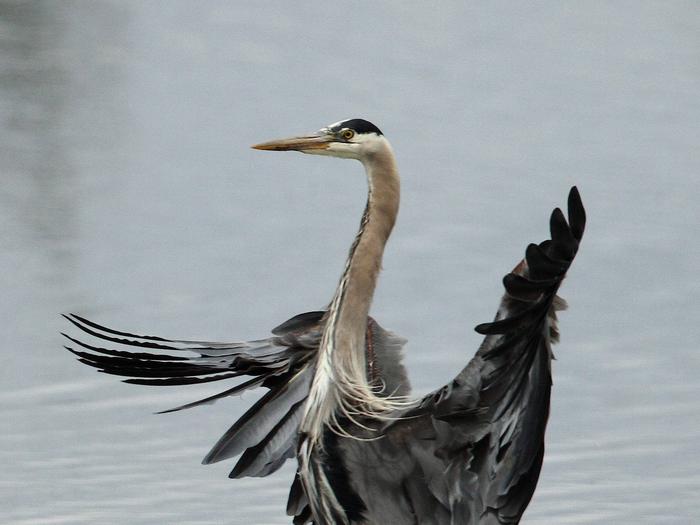Ankeny National Wildlife Refuge
Fish and Wildlife Service, Oregon.
Located near the confluence of the Santiam and Willamette Rivers, just off of Interstate 5, Ankeny offers unique wildlife viewing opportunities for the whole family! The refuge offers convenient access to miles of boardwalk and dirt trails as well as handicap and stroller accessible viewing platforms for its human visitors. Refuge kiosks and trails provide an interpretive and informative experience for visitors, so make sure to stop at the interpretive signs along the way to learn more about the refuge habitats and how they are maintained for wildlife.
Seasonal Wetland
The majority of Ankeny NWR's wetland habitat is seasonal. These are wetlands flooded by precipitation in the cool seasons and are then dried up by the summer heat. Most of the Refuge seasonal wetlands, however, are managed using a combination of dikes, spillways and water control structures. Using the water control structures, Refuge managers can release water collected and retained during the winter. This seasonality reflects the bird usage of the wetlands which numbers in the thousands during the winter, and drops down to mere hundreds in the spring and summer.
Permanent Wetland
42 of Ankeny's 530 wetland acres are permanent wetlands, with an additional 186 serving as permanent or seasonal depending on management decisions. These permanent wetland areas provide space for nesting waterfowl to raise their young, homes for red-legged frog and Oregon chub, and hunting grounds for osprey during the summer.
Wet Prairie
Wet prairies are characterized by shallow ponding of water on the prairie floor up to 6" deep throughout the winter and early spring. They are known for their mounded topography which forms low points that flood seasonally and create a unique environment to support a broad diversity of plant species. Once the most widespread habitat type on the Willamette Valley floor, intact historic wet prairie land today numbers less than 1% of its original area. Due to the rarity of this habitat type, many plant species native to the wet prairie are declining and listed as endangered or threatened under the Endangered Species Act.
Riparian
Riparian areas are vital habitat corridors for a number of different species of wildlife. Riparian hardwood forests once dominated the floodplains of the Willamette River; at the arrival of Euroamerican settlers these forests made up about 10% of vegetative cover in the Valley. Since the 1850's, these bottomland riparian forests have declined by over 70%. To explore the riparian woodlands of Ankeny NWR, take a walk down the Rail Trail Boardwalk.
Agricultural Fields
Representing the largest swath of land on the refuge, the agricultural crops grown on the refuge land provide essential fodder for wintering Canada geese. A vast majority of these agricultural fields are managed cooperatively with local farmers, thus benefiting both the refuge management goals as well as the farmers.
Nearby Activities
- Birding
- Hiking
- Photography
- Wildlife Viewing
Directions
The refuge is open from sunrise to sunset. The refuge is bordered by Ankeny Hill Road, Buena Vista Road, and Wintel Road to the north, west and south respectively, and visitors can access refuge trails and/or viewing areas from each. Parking is allowed in designated parking areas only. No overnight parking is allowed on the refuge.

